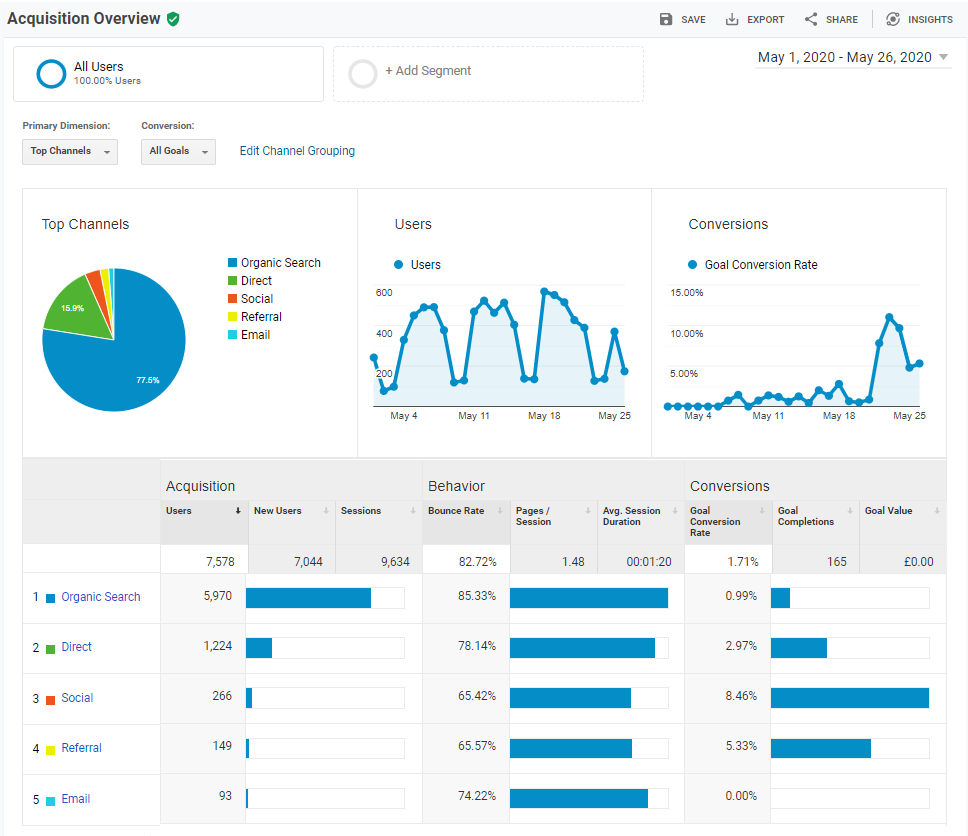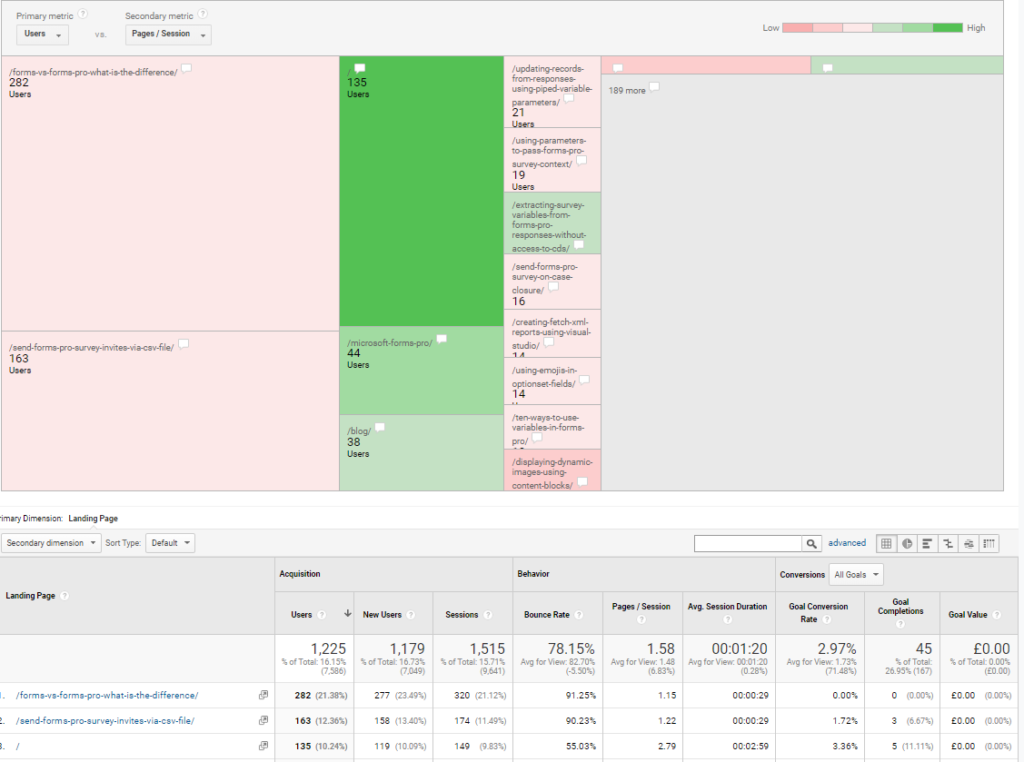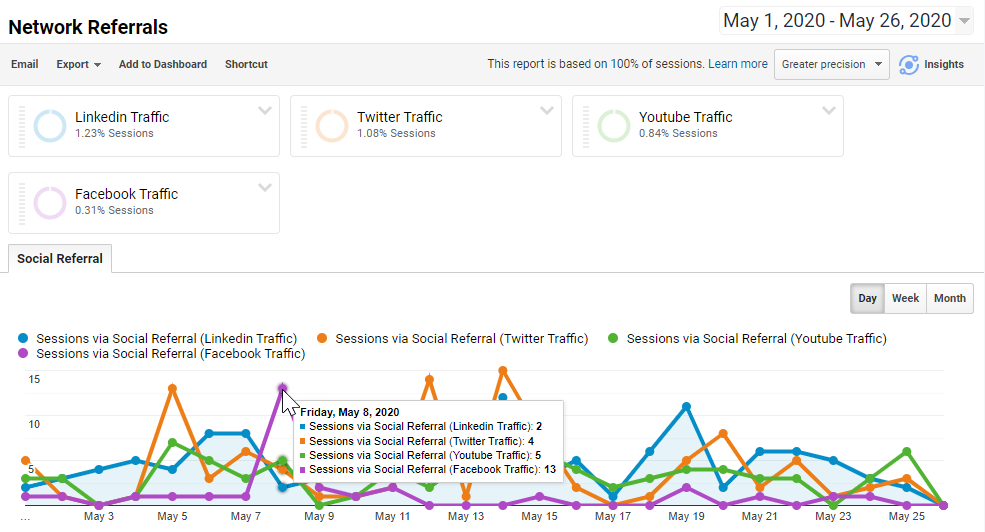*** NOTE: ALL INFORMATION IS ACCURATE AT DATE OF PUBLISHING ***
You are getting a TON of visitors to your site, the traffic is going up which is awesome! But where are they all coming from? Even if you just share your blog posts on Twitter, that doesn’t mean that’s where they are all coming from. People are ‘hopefully’ finding you via Organic search (typing something in to a search engine), and ideally your posts are being shared by other people elsewhere. So understanding the acquisition methods is important. It lets you know where your content is being shared, and how your visitors are discovering you.
Navigation to the Acquisition section on the left navigation, we can get some quick stats from the Overview report. I’ve got a healthy amount of traffic via organic search, so that means my posts are well optimised and people are finding me via a search engine. We can then see some traffic is coming in directly, either someone typing the URL in or a link from an email. Then we have social (traffic coming via clicks on a tweet or post on LinkedIn), and referral (links posted on another website that links back to my site). Finally, we have email… yes, I mentioned email links above, but these would be marketing emails where I’ve set things up to track (you can see this in things like MailChimp etc where you can link your email campaigns to Google Analytics). My email traffic isn’t that high since I switched to ConvertKit, and I display the full blog post in the email. People don’t need to visit my site to read it (still debating on if that’s a good idea or not).
If we look through the All Traffic section, we have various ways of reviewing the data. Channels will break it down at the top level and show the acquisition by Organic Search, Direct, Social, Referral, Email etc. Then you have a treemap, where data is represented as rectangles, with the size and colour of each one representing different metrics. They are a good tool to use for any hypothesis about your traffic to try and understand the relationships between different pages or posts you might have. From the help section, we can understand what the colour variants mean via the following definitions.
- The larger the rectangle, the higher the number of sessions for that landing page.
- Landing pages that have fewer pages/session will be on the red colour scale, and the darker the red, the lower the number of pages/session.
- Landing pages with more pages/session will be green, and the darker the green, the greater the number of pages/session for that landing page.
The Source/Medium section explains where the traffic came from. The Medium is the place the user was before they clicked on your content. So this goes back to the Organic Search, Direct, Social, Referral, Email etc list we reviewed earlier. The Source will then detail further into the Source. So for example, if the Medium is Social, the Source could then be LinkedIn, Twitter, YouTube. It gives us another level of information. If the Medium is Referral, the Source will contain the link to the website the visitor started from. Under the Source/Medium report, you can also drill in to the data further by filtering specifically on the referrals.
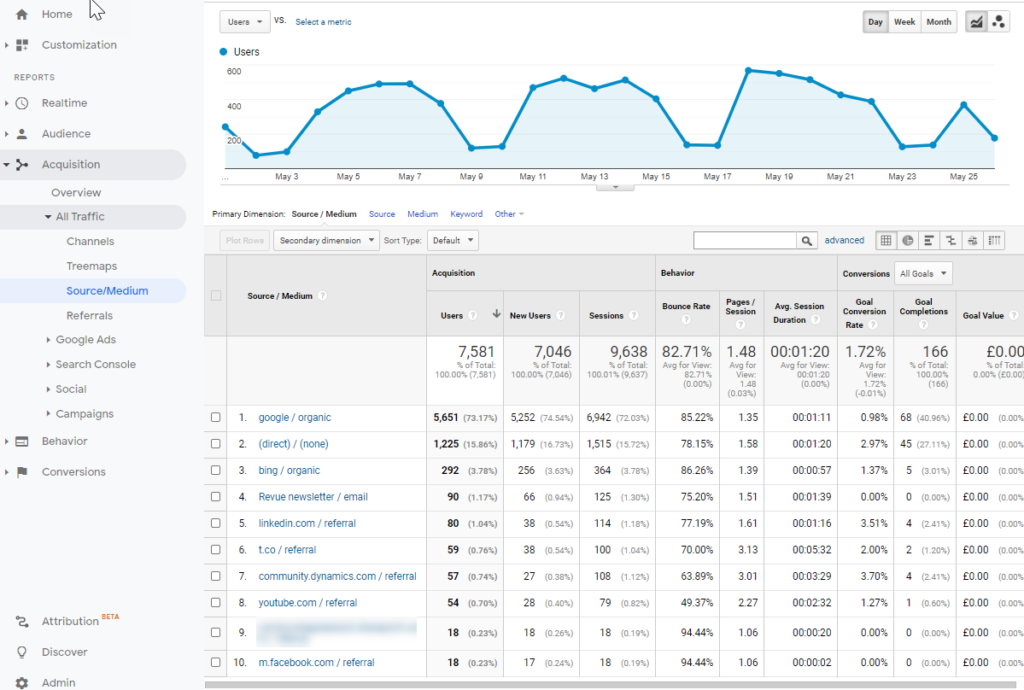
The Acquisition section also contains Google Ads analytics and provides visibility into the Search Console area (more on this in another post). We can also track our acquisition via Campaigns (which will also be covered in another post). The remaining section is for our Social acquisitions. This provides us with a way to dig into the sessions on our site that originated from a social media site of some kind. If you have any goals set up (don’t worry, we will dig into this in another post!) you will see how many conversions occurred due to this traffic. If you have any monetary value linked to your conversions, this will be displayed too.
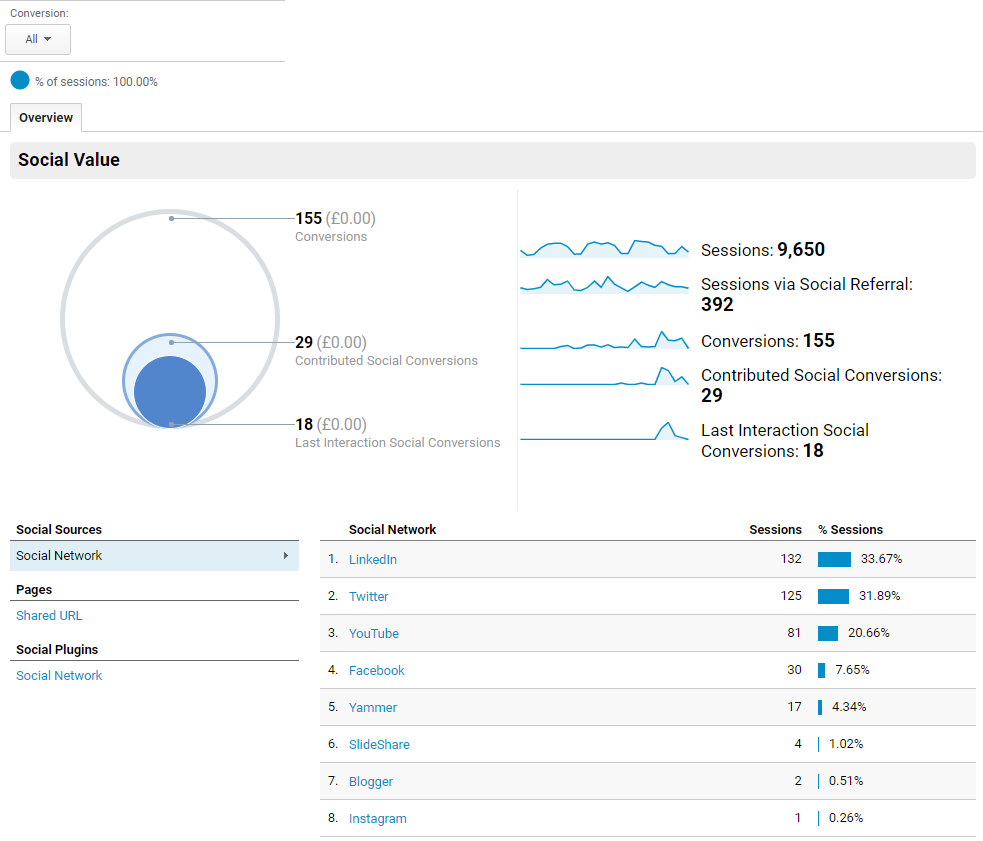
Under the Overview, Network Referrals can be reviewed. Using the Segments, we can look at the traffic for each specific Social media platform. Even though I don’t use Facebook to share any of my content, I know others must be posting links as there is a bit of a spike on May 8th with the most social traffic coming through.
Getting to grips with the Acquisition section is a good idea to learn where your visitors are coming from. Also, it’s good to understand and be aware that even if you aren’t sharing content on social media (if not, why not?), others are, so you are likely still getting traffic from those platforms.
Want to just watch how to do this? Check out the video: https://youtu.be/7M3rhwl1O_4
Check out the latest post:
Wave 2 2024 Customer Insights Journey Chat With Amey Holden
This is just 1 of 462 articles. You can browse through all of them by going to the main blog page, or navigate through different categories to find more content you are interested in. You can also subscribe and get new blog posts emailed to you directly.

